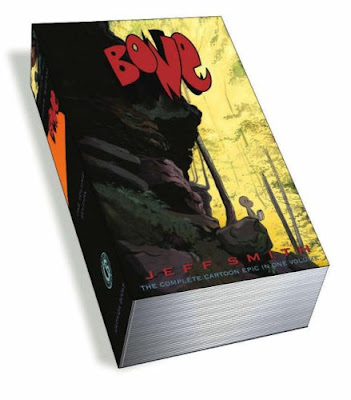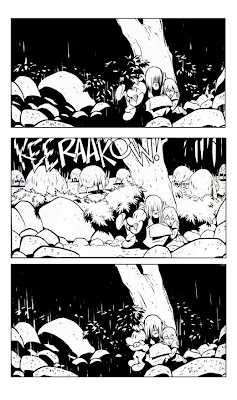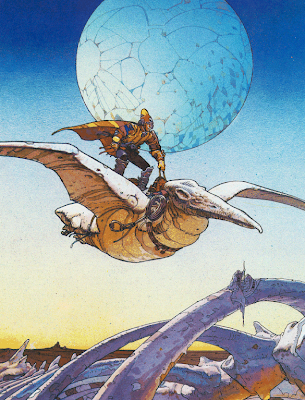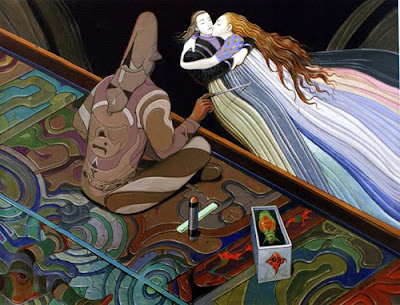The best thing Jeff Smith did was collect Bone into a one-volume brick edition.

Now, this is just personal opinion. There are no numbers to PROVE this. However, if Bone hadn't been released in the brick format, I would have never picked it up. Had I never picked it up, I would not have read it and in turn avoided pursuing a career making comics.

With Bone, there are very few things you can critique Smith for, because for the most part, it is perfect. Smith has proved himself as a master of chiaroscuro. The choices he makes in drawing a night scene in a forest are akin to Edison discovering the light bulb.

The emotion being conveyed in each page is pure and unfiltered by the gritty screen that many comics from the 80's and 90's abused. Instead, Smith gives us Fone Bone, a character reminiscent of Tolkien's Bilbo Baggins, if Mr. Baggins were more dapper. Overall, the characters, though innocent, still make mature decisions when faced with genuine evil. Even Gran'ma Ben doesn't let her dark past force her to be brooding.
The Bone brick is what countless artists and writers wish they had created and kick themselves for being beaten to it.
Lesson Learned: A story doesn't need to be dark and gritty to be mature.





















